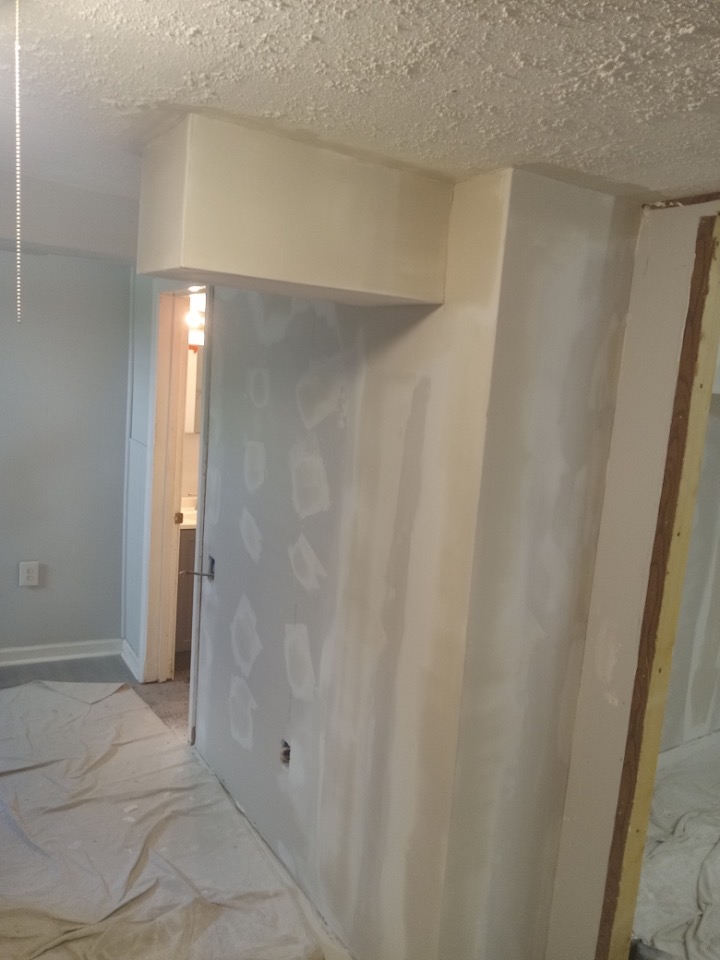
When it comes to drywall, or gypsum board, you might have noticed that it comes in various colors. These colors aren’t just for aesthetics; they signify different types of drywall with specific applications and properties. Understanding what these colors represent can help you choose the right drywall for your project and ensure optimal performance and durability.
1. Standard White (Regular) Drywall
Color: Typically, standard drywall is white or off-white.
Usage: This is the most common type of drywall and is used in general interior walls and ceilings. It’s designed to be painted or finished with various textures. Standard drywall is suitable for most areas of a house where there are no special requirements for moisture or fire resistance.
Properties: Standard drywall is primarily composed of a gypsum core encased in paper. It provides adequate performance for typical residential and commercial applications where moisture, fire, or impact resistance isn’t a primary concern.
2. Blue (Moisture-Resistant) Drywall
Color: Blue or green.
Usage: Also known as green board or moisture-resistant drywall, this type is used in areas prone to high humidity, such as bathrooms, kitchens, and laundry rooms. It helps prevent mold and mildew growth better than standard drywall.
Properties: Moisture-resistant drywall has a special coating or treatment that makes it less absorbent and more resistant to moisture damage. However, it is not entirely waterproof and should not be used in areas with direct water exposure.
3. Purple (Moisture and Mold-Resistant) Drywall
Color: Purple or lavender.
Usage: This is a newer type of drywall designed for high-moisture and mold-resistant environments. It’s often used in areas where both moisture and mold resistance are crucial, such as bathrooms, basements, and other damp areas.
Properties: Purple drywall combines moisture resistance with enhanced mold resistance. It has a special paper coating and core treatment that provides superior protection against mold, mildew, and moisture-related damage compared to traditional moisture-resistant drywall.
4. Type X (Fire-Resistant) Drywall
Color: Typically, Type X drywall does not have a distinct color like the others but can sometimes be found with a light gray or other colors.
Usage: Type X drywall is used in fire-rated assemblies to help slow the spread of fire. It’s commonly used in walls and ceilings that require a fire-resistant rating, such as those between garages and living spaces or in commercial buildings.
Properties: This drywall has a thicker core with special additives, such as glass fibers, that enhance its fire resistance. It can typically withstand higher temperatures and provides a certain amount of fire resistance for a specified period.
5. Type C (Enhanced Fire-Resistant) Drywall
Color: Similar to Type X, Type C drywall doesn’t have a unique color but may appear in shades of gray or other variations.
Usage: Type C drywall is an advanced version of fire-resistant drywall and is used in applications requiring higher fire resistance ratings than Type X. It’s often used in areas that require extended fire resistance, such as in commercial buildings or certain residential applications.
Properties: Type C drywall features a thicker core with additional fire-resistant additives. It provides superior fire resistance compared to Type X and can offer up to 2 hours of protection in certain applications.
6. Impact-Resistant Drywall
Color: Usually gray or beige.
Usage: Impact-resistant drywall is designed for high-traffic areas or locations prone to physical wear and tear, such as corridors, schools, and gyms.
Properties: This drywall features a reinforced core that provides better resistance to impacts and abrasions. It helps prevent dents, dings, and other damage that might occur from heavy use or accidental impacts.
Conclusion
Understanding the different colors and types of drywall is crucial for selecting the right material for your construction or renovation project. Each color represents a specific type of drywall with unique properties and intended uses. Whether you need moisture resistance, fire resistance, or enhanced durability, there’s a drywall option that fits your needs. By choosing the appropriate drywall type, you can ensure that your walls and ceilings perform well and stand up to the demands of their environment.
Cedar Hill St. Louis Jefferson County Olivette Kirkwood Ballwin Arnold Franklin County St Charles County Fenton High Ridge Dittmer Creve Coeur
